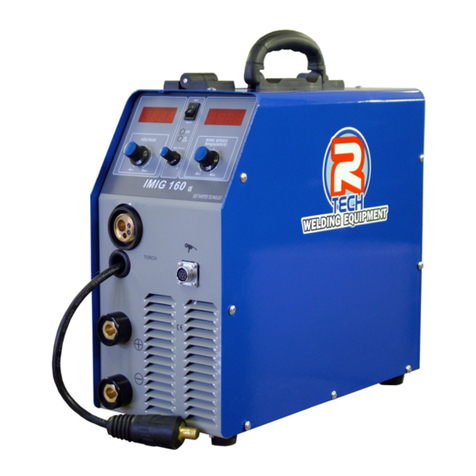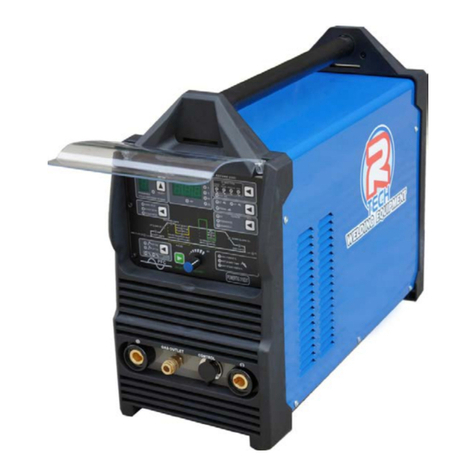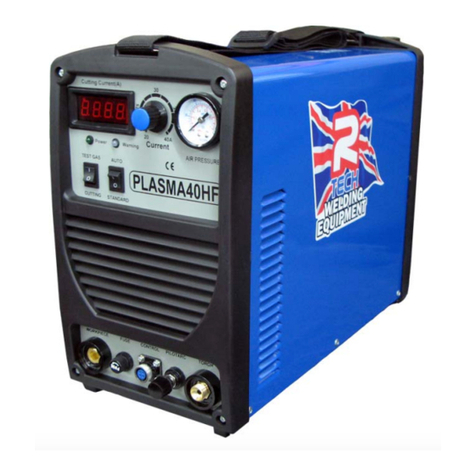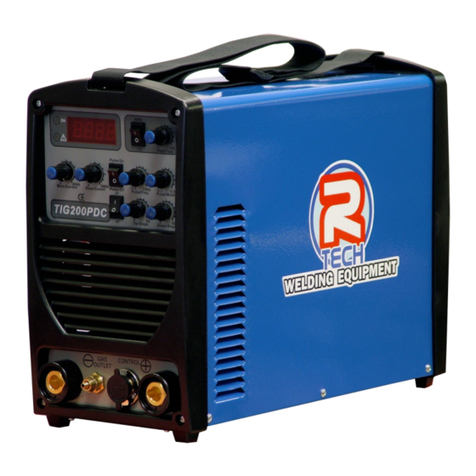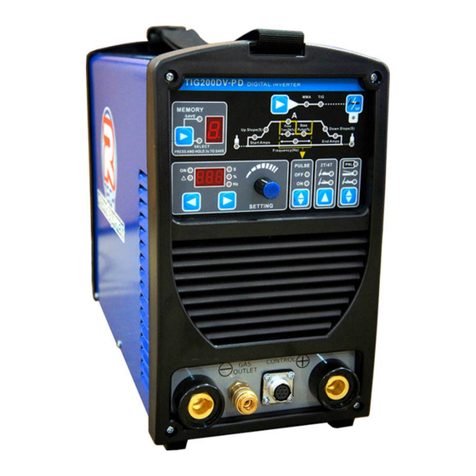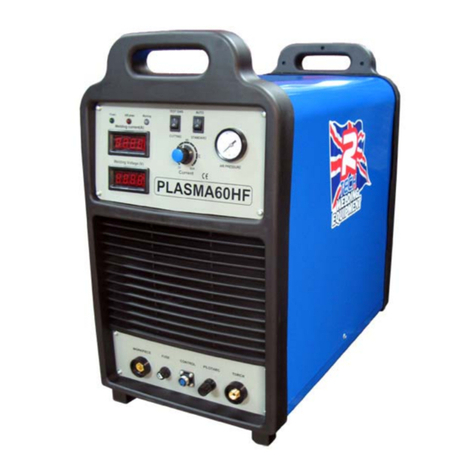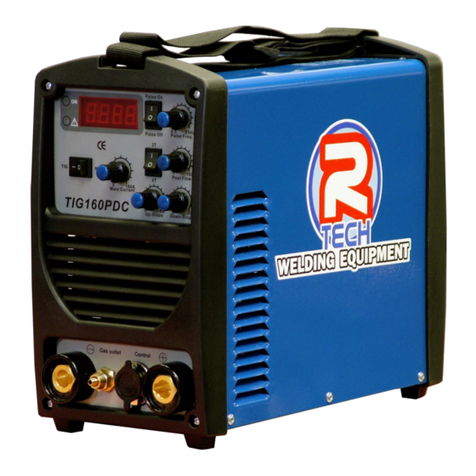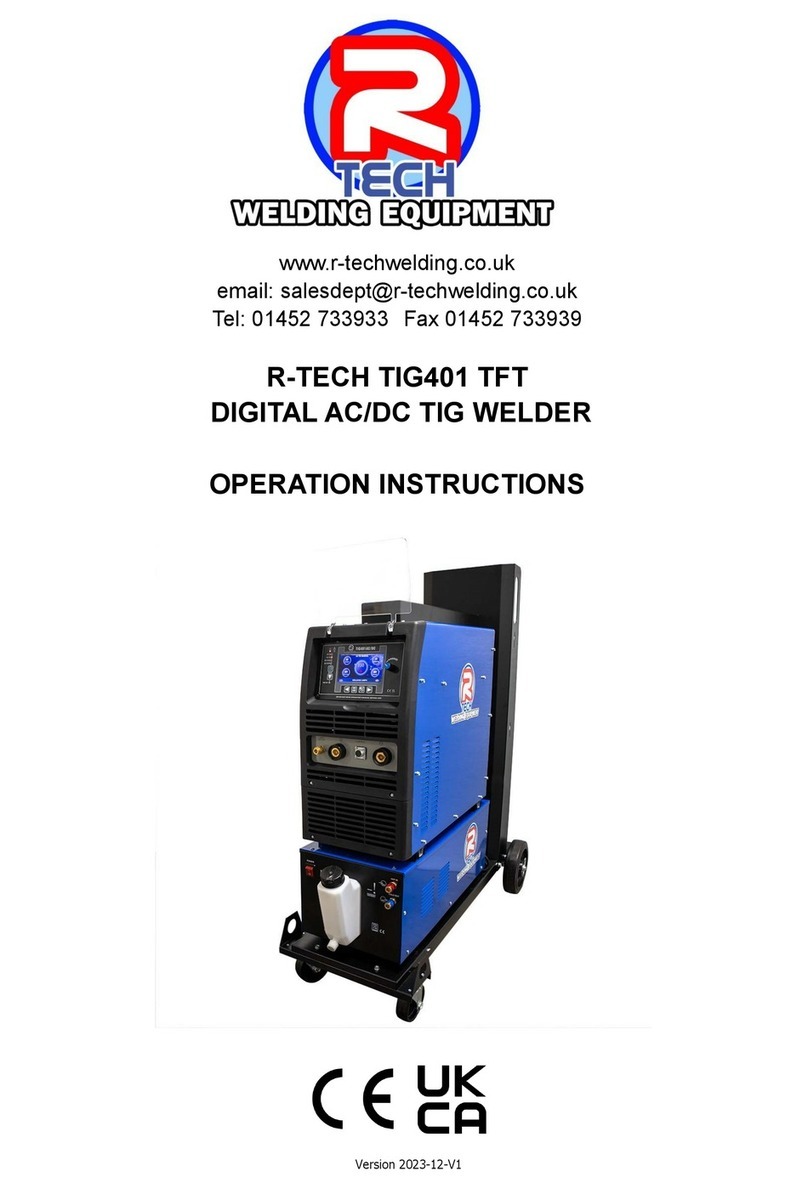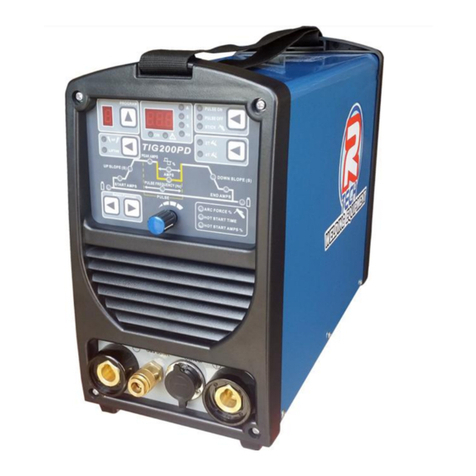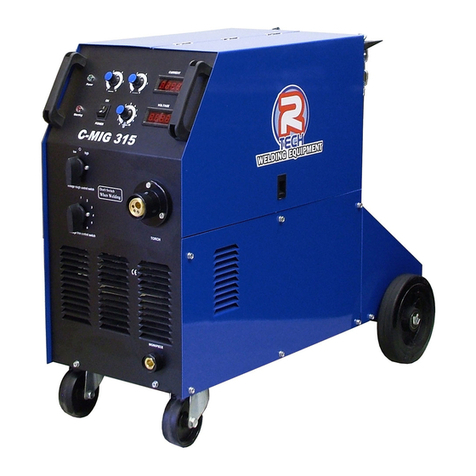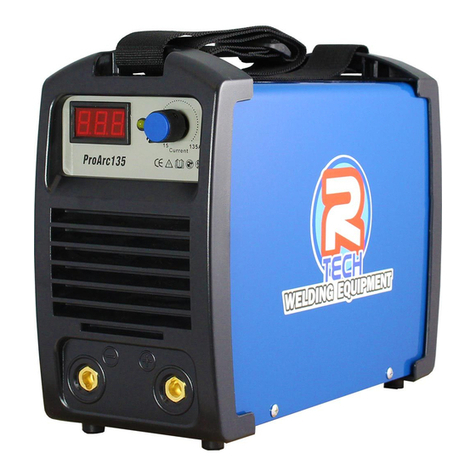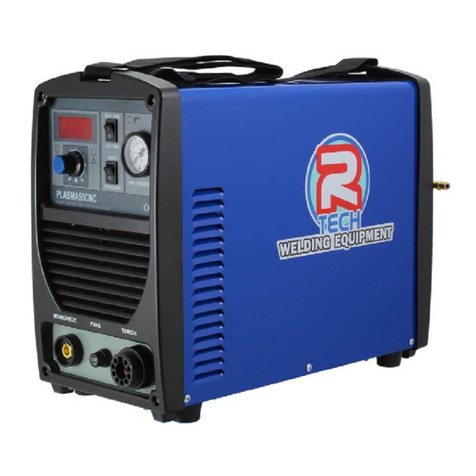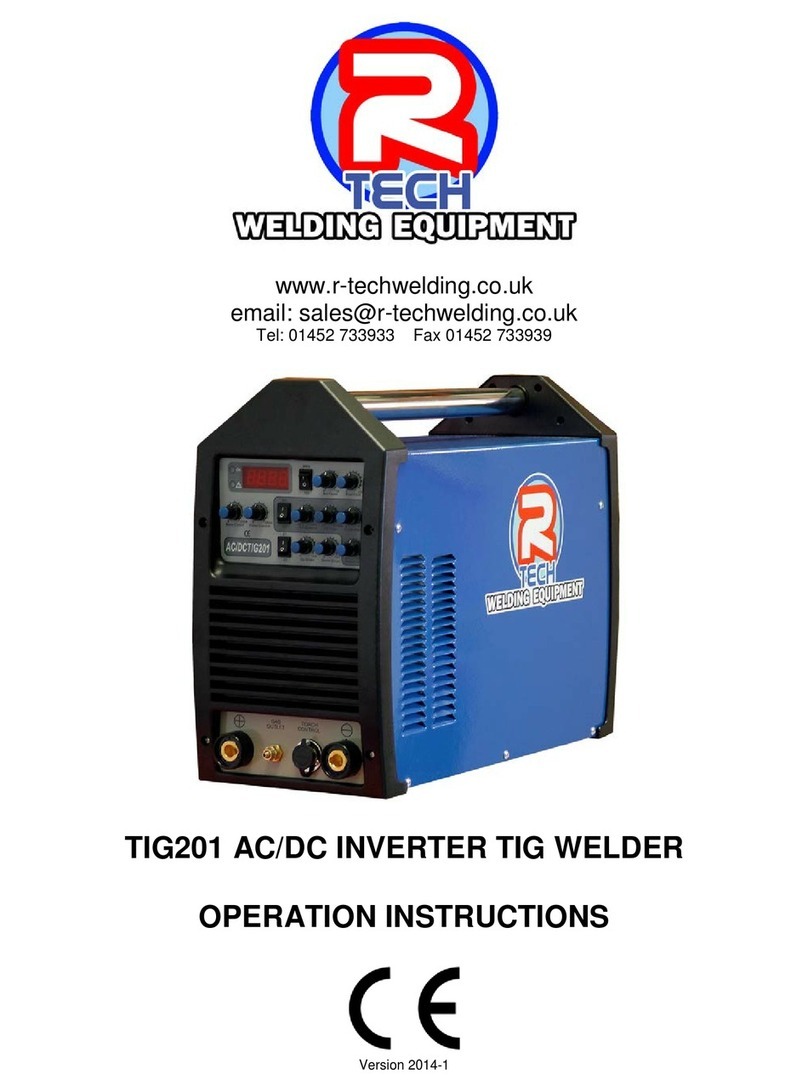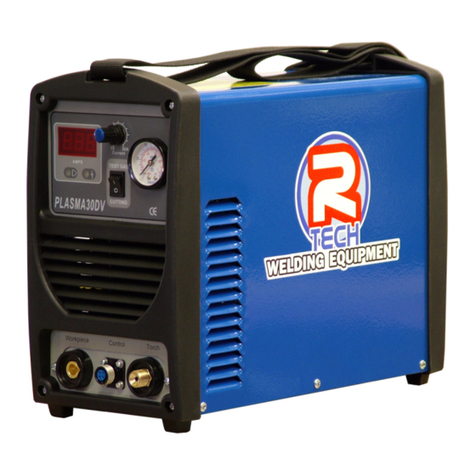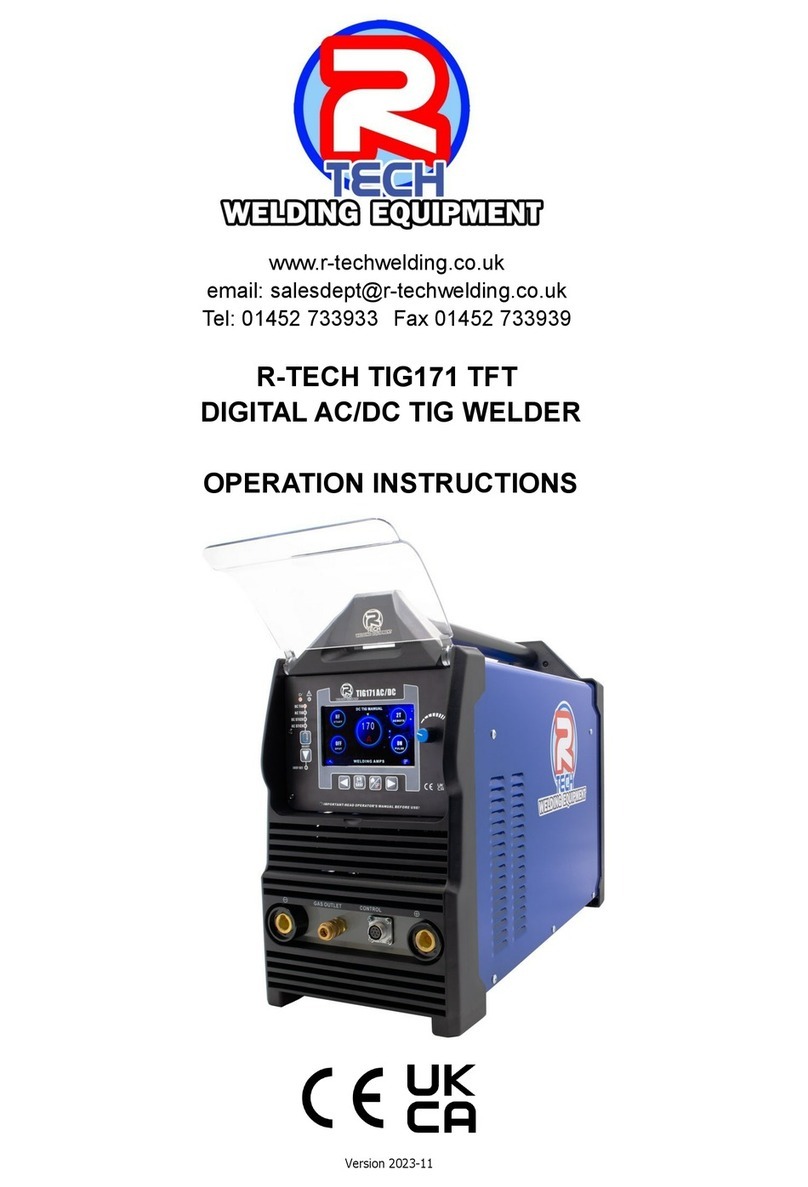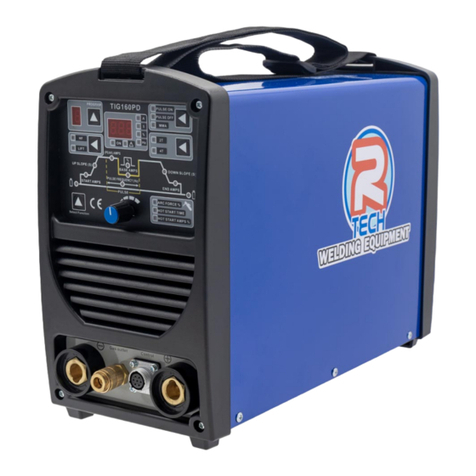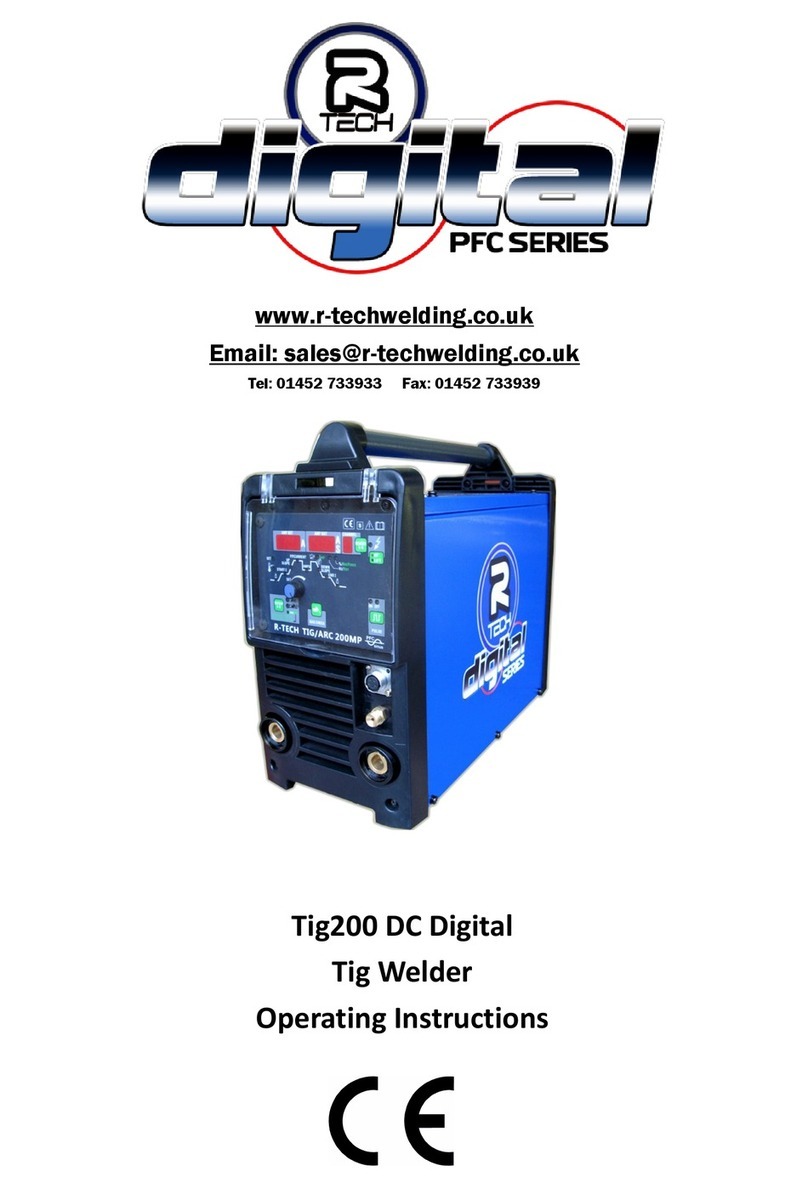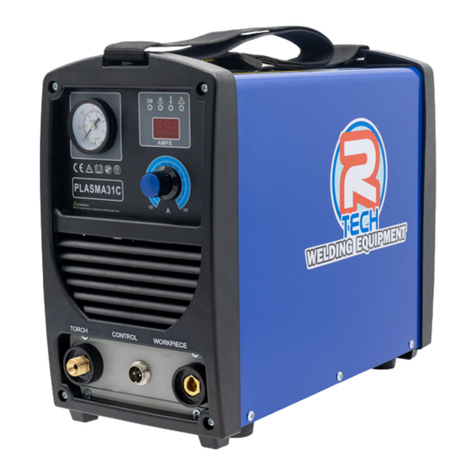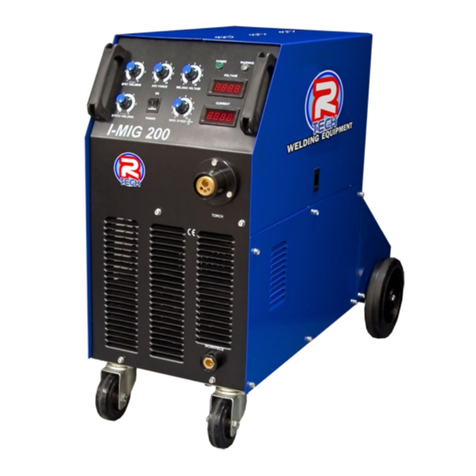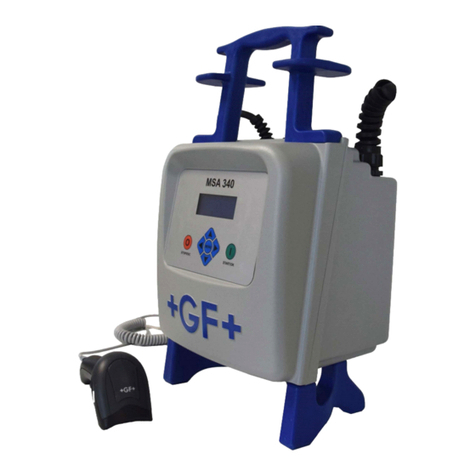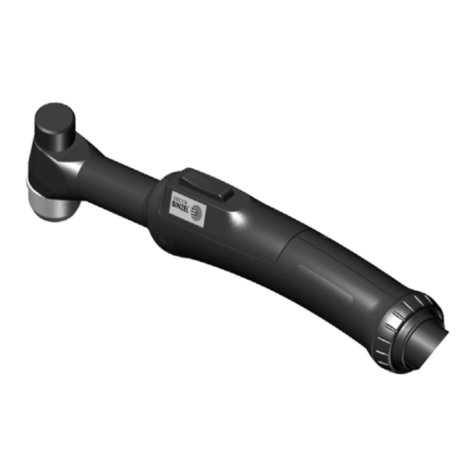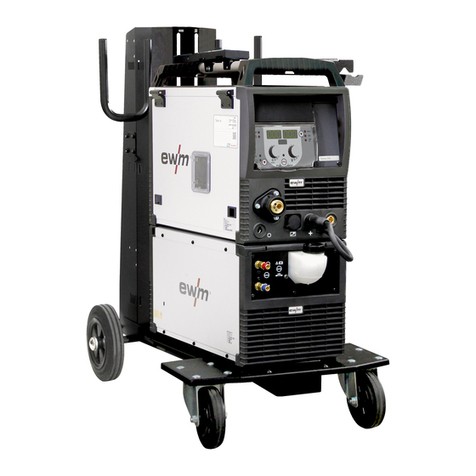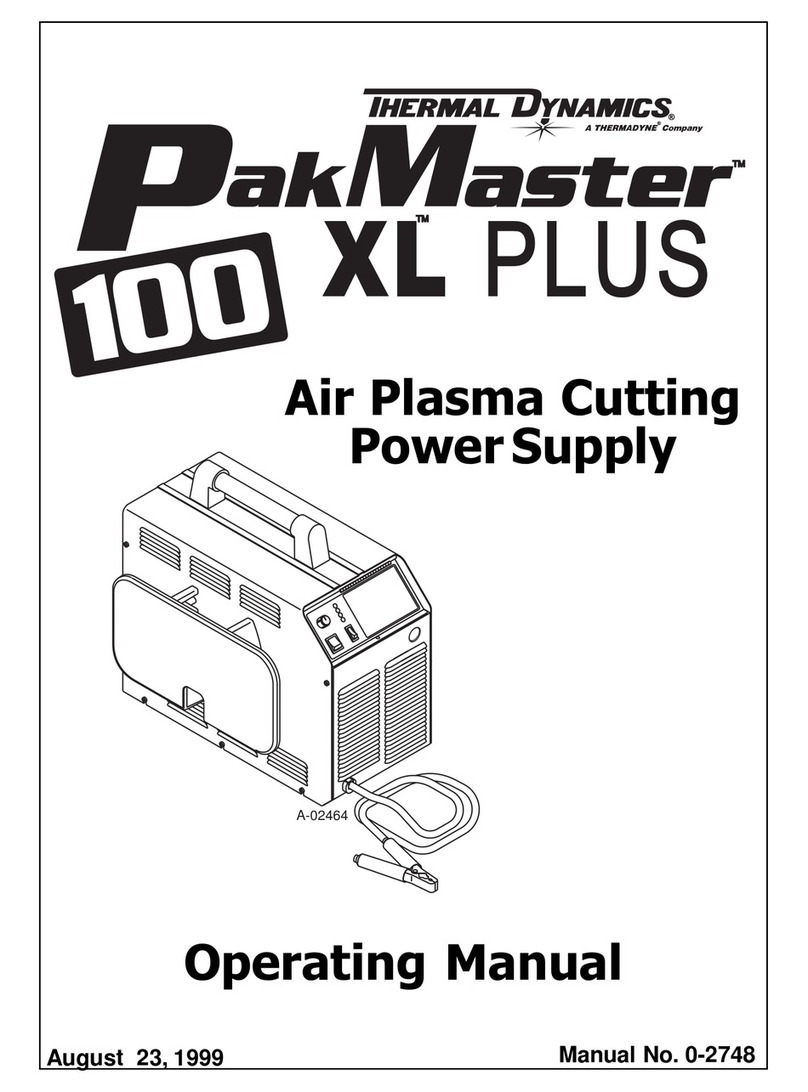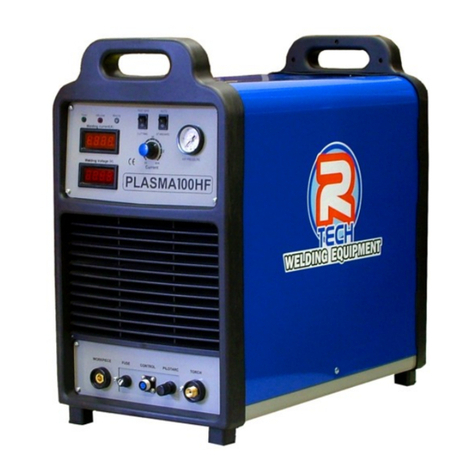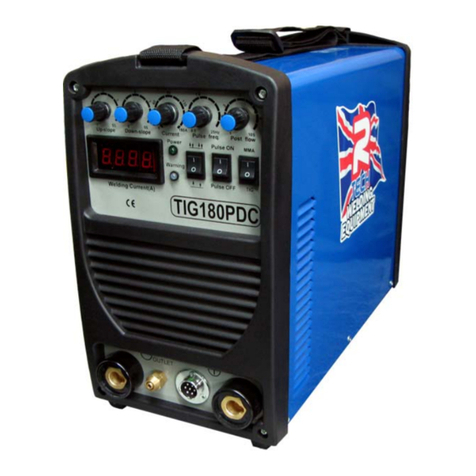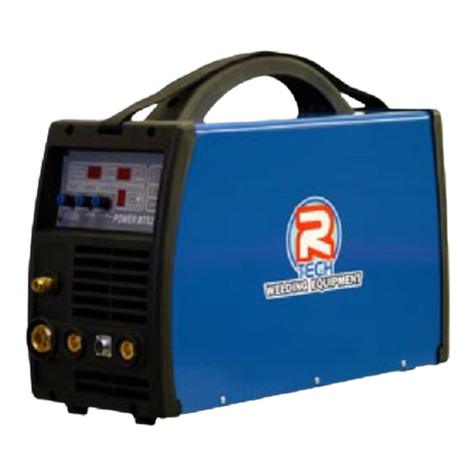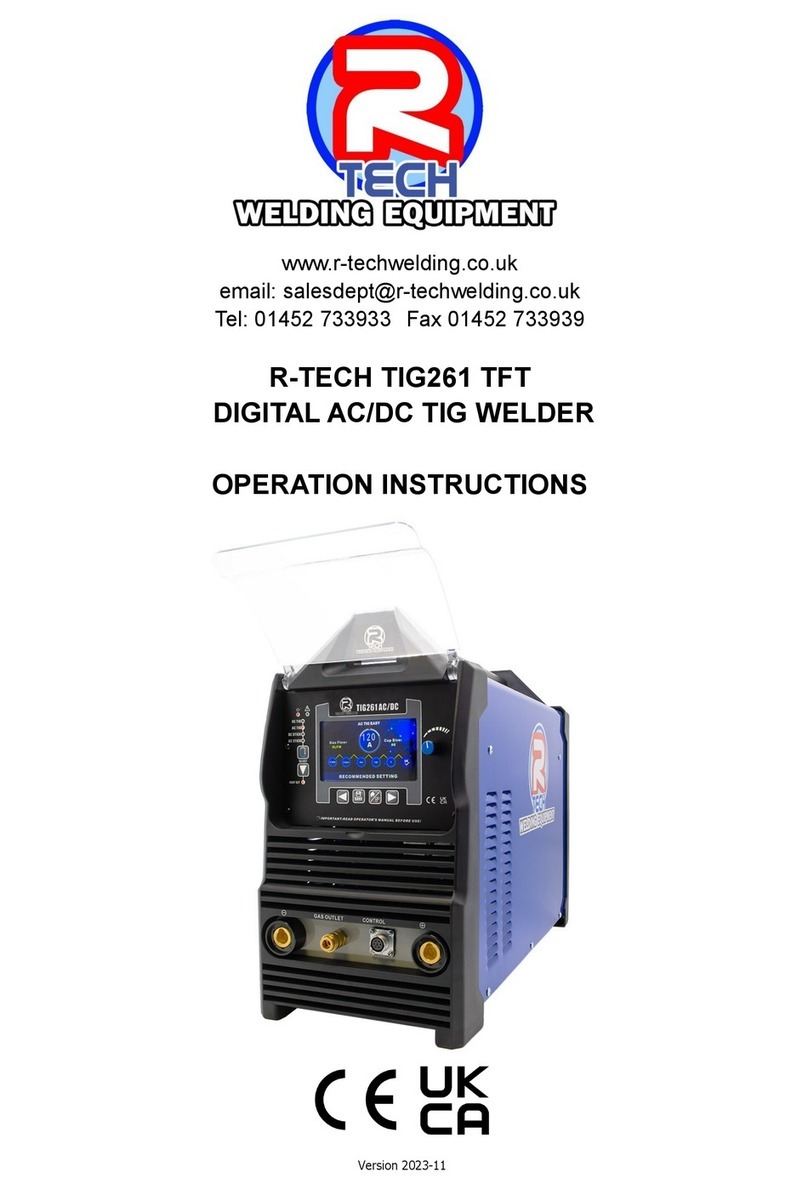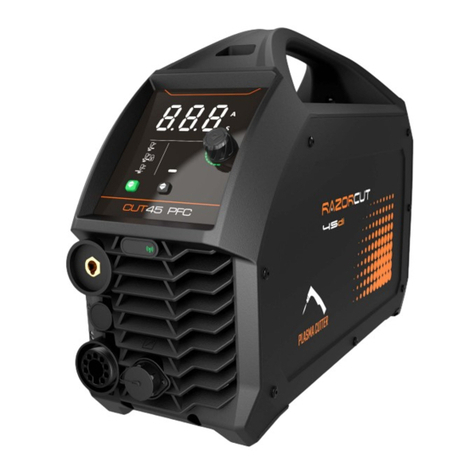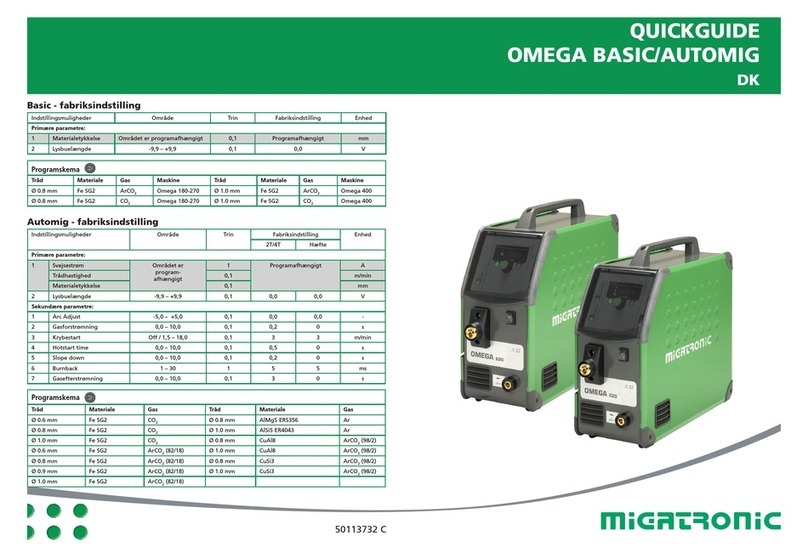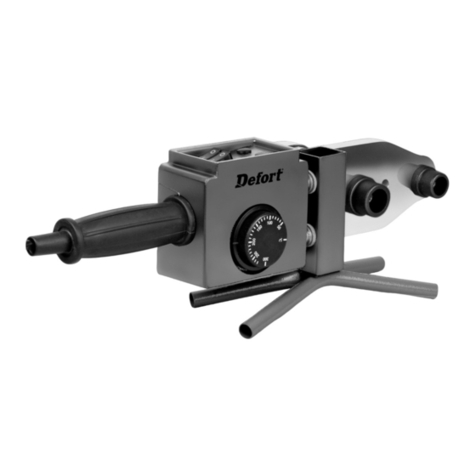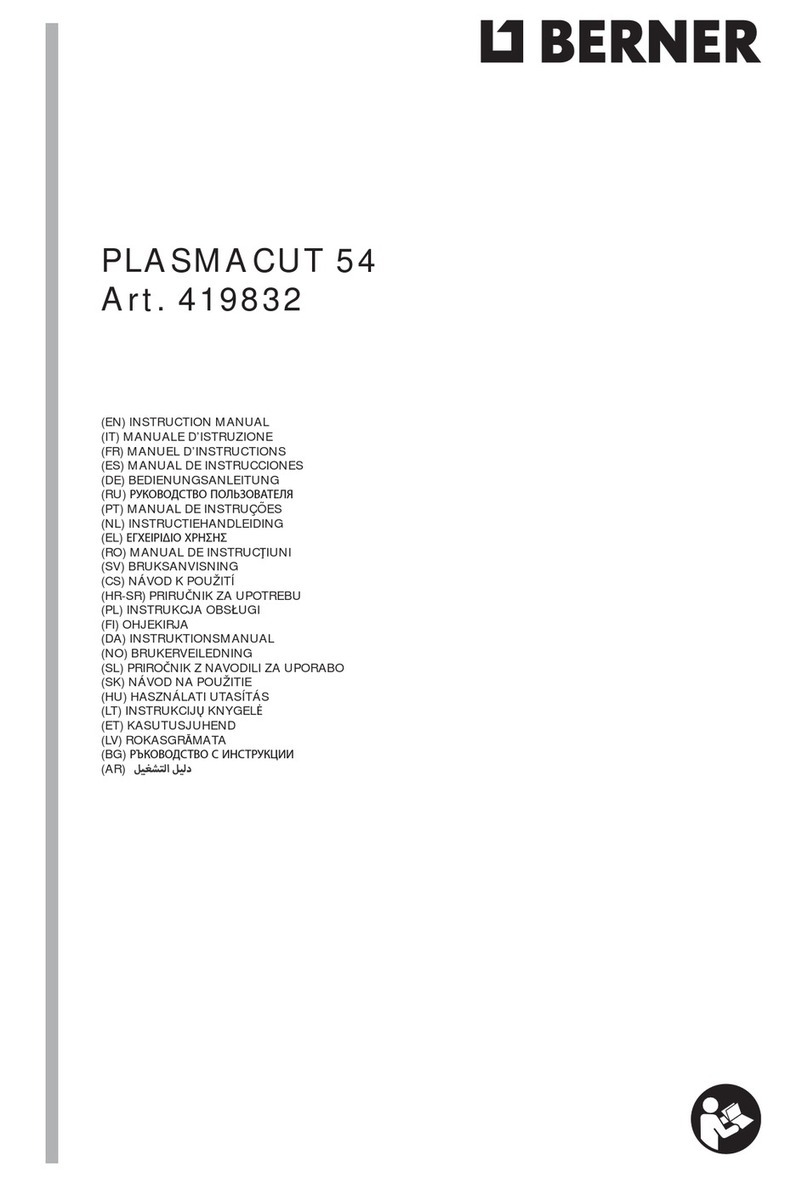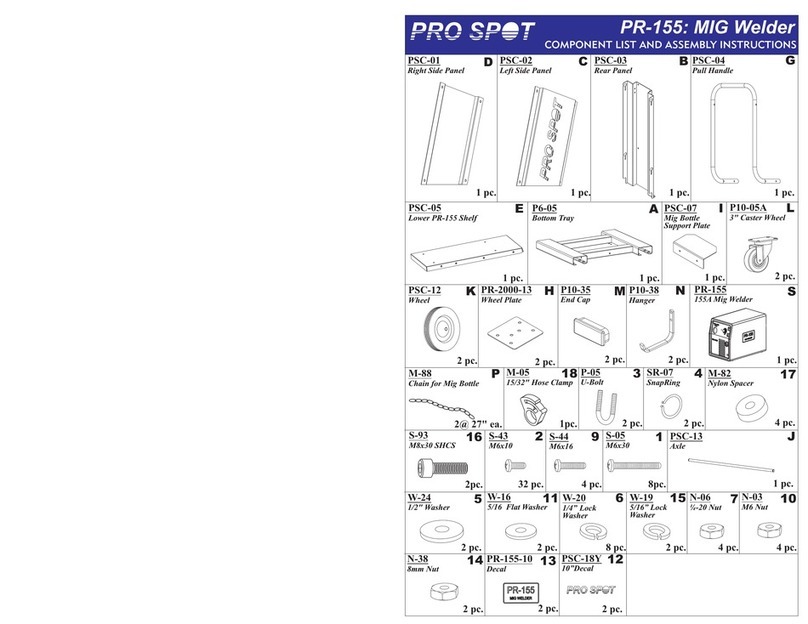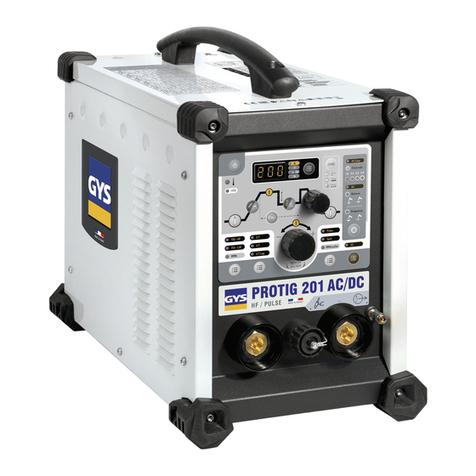
9
7) MIG / TIG / MMA Process Selector
The 1st function represents MIG welding mode in either STD mode (Manual) or SYN mode (SYNERGIC)
The 2nd function represents TIG welding mode.
The 3rd function is MMA (Stick welding),
8) Voltage - When lit LED display 1 will show weldingvoltage
9) Forward selector button
Use this to cycle forwards through the welding parameters
10) Back selector button
Use this to cycle backwards through the welding parameters
11) Duty Cycle / Over current Warning
When the duty cycle has been exceeded or an over current condition will occur, the LED will light. Allow the unit to
cool while running until the light goes off or for 10 minutes before resetting the welder. If the condition persists,
check for loose wires or voltage supply problems or call R-Tech support.
12) Memory channel LED
This displays current memory job number 1 - 9
13) CH (channel) / SAVE & Process Selector
Pressing button will change memory store number and show values stored. To set up a new memory store first
select number to be programmed, then enter setup parameters as required and then press save for 3 seconds to
program current setting to shown memory number, the save LED will light once saved.
14) MMA / STICK parameters
Press to select function required, this will be shown in display (1) and can be adjusted with knob (18)
ARC Force % - This controls the arc response to when electrode is held close/away from workpiece. Arc force
automatically adjusts by changing the volts / amps to maintain a stable arc.
HOT Start % - For controlling the amount of extra amps when the arc is first started and prevents the
electrode sticking to work. Adjustable from 0 - 100% of hot start amps available.
Hot Start Time - Adjusts the time in 0-2 seconds that the hot start will happen at beginning of weld. This helps
to reduce electrode sticking to work.
15) 2T/4T and Pedal/Spool Gun Switch Selector
The torch trigger function is designed to operate for both MIG and TIG functions.
2T (MIG/TIG) - The trigger on either the MIG or TIG torch should be simply held down to start weld and released
when finished welding.
4T (MIG/TIG) - function operates as a torch latch in MIG & TIG mode that locks the torch on without needing to hold
the trigger down when welding.
To operate 4T in MIG mode, simply press the torch trigger and hold it down until the arc starts. To lock it
on, release the trigger and you can then weld without holding the trigger down. To stop, the trigger must be
pressed again and then released.
